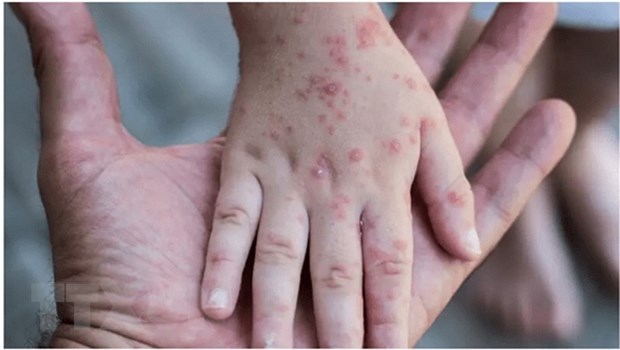 Society
Society

 |
US agency Centre for Disease Control and Prevention has been helping Việt Nam issue guidelines for monkeypox prevention and detection. — Photo baotintuc.vn
HCM CITY — It is likely that monkeypox will eventually appear in Việt Nam since the country is open for travel and trade, and so it needs to have plans to deal with it and limit community spread, US agency Centre for Disease Control and Prevention has said.
Eric Dziuban, its Việt Nam country director, said over 21,100 cases have been recorded in 78 countries as of July 29, and the disease is spreading fast.
There have been five deaths so far.
Since June the CDC has been working with Việt Nam’s Ministry of Health to issue recommendations and guidelines for monitoring, diagnosis, treatment, and prevention of monkeypox.
The CDC is also working with the World Health Organization to help Việt Nam and other countries get access to monkeypox testing equipment.
Nguyễn Hồng Tâm, deputy director of the HCM City Centre for Disease Control, said the disease’s symptoms include fever, headache, fatigue, systemic skin lesions, and swollen lymph nodes.
Monkeypox spreads from person to person through close contact, wounds, body fluids, droplets, and contact with contaminated objects such as blankets and pillows.
The incubation period is five to 21 days (usually 6 to 13 days).
While there are vaccines for the disease, there are no drugs for it yet.
On July 23 WHO declared monkeypox a global public health emergency due to its rapid transmission rate.
HCM City has called on the ministry to have visitors entering the city make a health declaration and have their temperature monitored.
People who are suspected of having the disease should be told to self-quarantine and monitor their health at home, it said.
If there are severe symptoms, people who suspect infection should visit the HCM City Hospital of Tropical Diseases, and they would be quarantined and treated at the hospital if they test positive, it said.
The HCM City Centre for Disease Control and Prevention will also test and monitor people who have been in close contact with patients. — VNS


.jpg)

